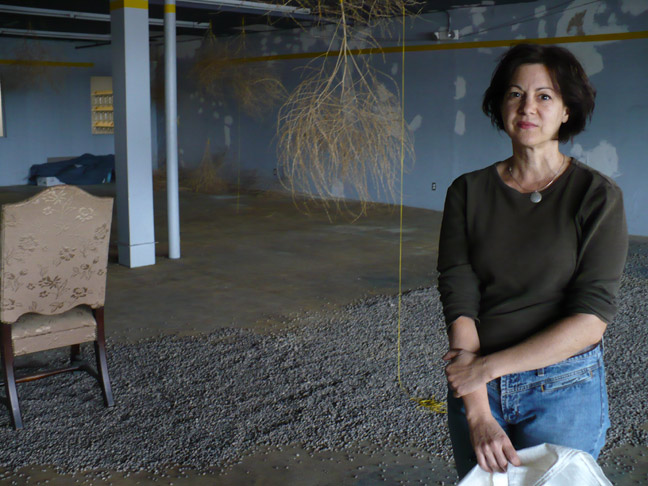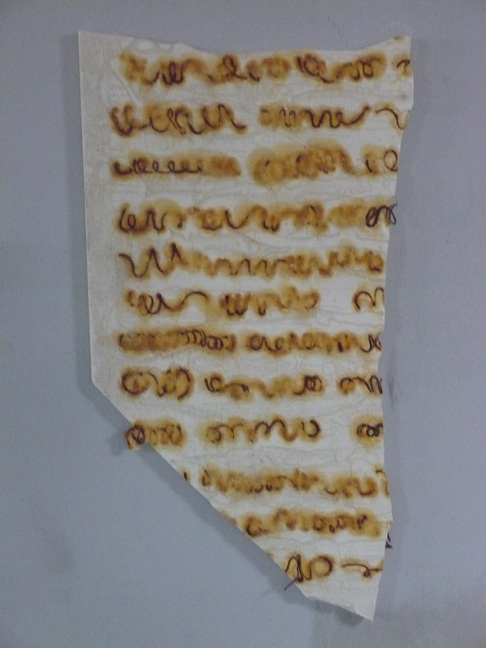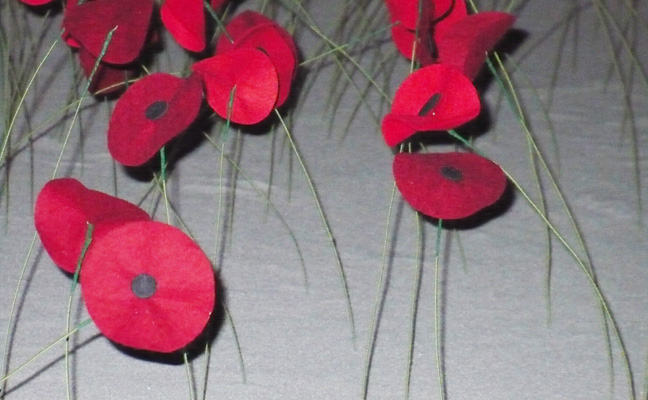 Long Beach Exposed is an ambitious and exciting exhibition of installation works in the vast, 25,000 square-foot structure that was the Expo Furniture store on Atlantic in Bixby Knolls. Created as a cornerstone of Arts Council for Long Beach‘s Greater Long Beach Arts Lab (Global) celebration of national Arts and Humanities Month, the exhibition features a broad spectrum of work, and an equally diverse collection of artists.
Long Beach Exposed is an ambitious and exciting exhibition of installation works in the vast, 25,000 square-foot structure that was the Expo Furniture store on Atlantic in Bixby Knolls. Created as a cornerstone of Arts Council for Long Beach‘s Greater Long Beach Arts Lab (Global) celebration of national Arts and Humanities Month, the exhibition features a broad spectrum of work, and an equally diverse collection of artists.
Erin Harkey, Associate Director of Public Art & Design for the Arts Council, co-curated the show and took some time to share her insights about the artists, their work, and the origins of the show, which has an opening reception this Friday, October 9th, from 7 – 10 PM.
Sander: Can you talk a bit about the origins of this exhibition, and how it evolved into what it is now?
Erin: Kamran Assadi presented the idea to me of having an art exhibit at the EXPO building for October is Arts Month (now GLOBAL). Initially, it was supposed to be more salon style – open to everyone. We had a very early (May) planning meeting with Chris Scoates, Ron Nelson, Kamran, Blair Cohn, Leslie Markle, John Geldbach from DDR, and myself. It was a very frank conversation about the realities of the space and the time constraints and it was decided that more targeted outreach to emerging artists and mostly installation based work was the way to go.
Sander: How did you assemble the list of participants?
Erin: It was a conversation between Leslie Markle (Director of Public Art and Design at the Arts Council) and myself. We tried to identify artists that had a Long Beach connection, either through residency, education, teaching, etc.. Then, I went through all of the proposals that we had received in the past year through our temporary public art calls and identified a few artists, though there was some overlap between the two groups.
Sander: Were you using any other criteria, eg media, experience, etc?
Erin: Definitely experience, and quality of past work. We tried to judge if they were up for the challenge. I should say that all of the artists were taken on a tour of the site, and submitted proposals that we reviewed.
Sander: There is quite a bit of creative diversity in the show. Can you talk about some specific works, and the artists who created them. Let’s start with Melissa Ficociello.

Erin: Sure. She’s great, and a set designer by trade. I think that really shows in the work that she did. There’s a real sense of theatrics. She submitted a proposal for the Arts Council’s Mobile Exhibits program which I loved, but we were unable to give her a commission at that time. I was excited that we had another opportunity to work with her.
Sander: Can you talk about the work she’s doing for Exposed?
Erin: It really makes great use of the space. Tumbleweeds are suspended from the ceiling and there is a lone chair sitting in the middle of the room. The entire floor is covered with pebbles. It’s very well rounded in that there’s both a tactile experience with the walking and also a kinetic experience when the wind blows through the tumbleweeds and moves them slightly. It’s basically an abandoned garden- very peaceful.
Sander: Can you talk a bit about Tony Brown, and his contribution?

Erin: It just so happened that Tony Brown’s work fits conceptually with the building more than any of the other artists. The building used to be an old furniture store- Tony takes furniture, and breaks it down to create discreet art objects. Also, a funny thing about the space is that there are tons of couches around that are used as seating for the different events (those couches are actually used in the adjacent installation from Gordon Winiemko and Jeff Foye). Tony took one of the existing couches and created a piece specific for the show. I don’t know him well outside of this project, but he went to CSULB and is obviously a fantastic wood-worker.
Sander: Can you tell me about Karrie Hovey‘s Sand Box with the red felt flowers?

Erin: Karrie is from Northern California. Her description reads, “Sand-Box questions the roll played by U.S. foreign policy and our military involvement in Afghanistan as an indirect aid in poppy production, the opium trade, and as a source of financial funding for the opposition.” She also has a piece called “IV – 0110100101110110” that, according to her, is “in response to the seizure of digital correspondence by the federal government and the upcoming congressional vote to legalize broad searches of digital communication. 0110100101110110 translates the fourth (IV) amendment into an analog binary installation.”
Kendell Carter, a Long Beach resident and fantastic artist, is also in the show. He’s pretty well known outside of Long Beach and had an exhibition at the Hammer Museum in 2007.
Sander: Which piece is his?
Erin: It’s not installed yet, but it’s called Exposure Therapy and deals with an aesthetic casual and formal cultures. Du- rags made to look like jelly fish.
Sander: So, now that much of the show has been installed, how does it feel?
Erin: The artists were fantastic to work with and we’re happy and excited to have their work shown in Long Beach. It was a challenge, no doubt but, in the end, I hope it’s something that we as a community can be proud of.
*
The Expo Building is located at 4321 Atlantic Avenue, and the regular gallery hours are Friday through Sunday from 2 – 6 PM. More information, including a complete list of participating artists, can be found at ArtsLB.org. Visit GlobalLB.com for a list of more than 300 cultural events taking place throughout the City in October.
The exhibition is sponsored in part by the Long Beach Redevelopment Agency and the Bixby Knolls Business Improvement Association.

